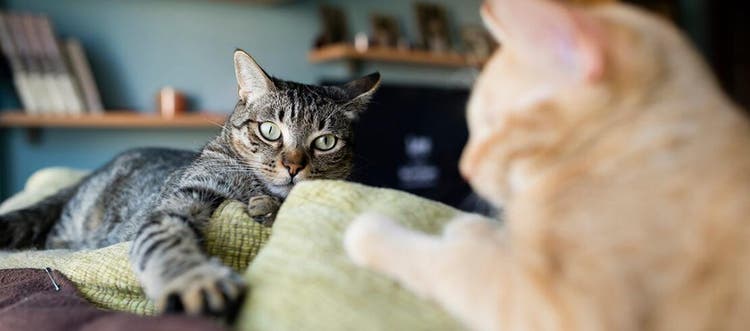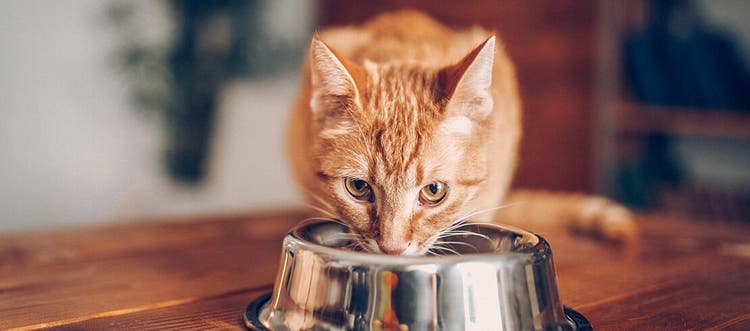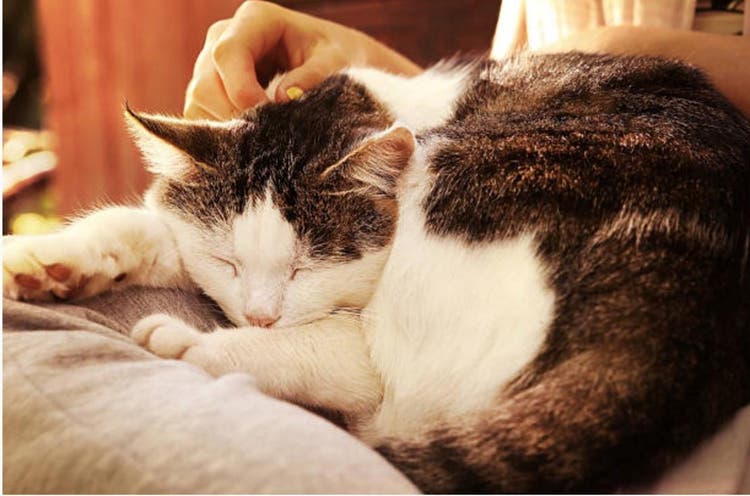Reviewed by Dr Abbie Lam DVM
While domestic cats love to lounge and snooze; they need play and exercise too. Find out why exercise is important, how you should play with your cat and how to find their favourite activity.
It’s no surprise that indoor cats get much less exercise than outdoor cats. But exercise and play are critical to the overall wellbeing of cats. It’s important to find opportunities to let them tap into their natural animal instincts with at least three five-minute periods of intense play sessions per day.
Why is exercise and play important?
Playing with your cat isn’t just an opportunity to bond with them – it’s a way to keep them healthy so you can enjoy more years together. Across the world, pet obesity rates are rising, so by incorporating exercise into your cat’s daily routine, you can help them maintain their weight, keep their muscles strong and avoid diseases that come with obesity, like diabetes, osteoarthritis and high blood pressure. It’s also important to ensure that your cat’s diet is appropriate for their exercise levels and age.
In addition to helping them maintain peak physical health, play and exercise also helps your cat develop good behavioural habits. Play stimulates your cat in a positive way while preventing them from destroying household items like furniture or plants. It also teaches them the appropriate and inappropriate times to play and helps keep their mind alert and active.
How much exercise does a cat need?
While your cat’s exercise needs will vary by age, weight and current activity level, it is generally recommended that you engage your cat in at least three five-minute intense play periods each day. Kittens may require more regular play, whereas senior cats may be content with less regular activity. Playtime can also be a good opportunity for you to observe and monitor any changes in your cat, particularly as they get older. See our tips on changes to watch out for in your senior cat.
When you’re playing with your cat, remember they are predators by nature, and these short, five-minute bursts of activity are comparable to how they would hunt in the wild. Cats – even those that live indoors – were born to climb, jump, hunt and chase. Don’t be afraid to tap into these animal instincts and mimic their natural behaviours as you play.
How to exercise your cat
To find out whether your cat prefers climbing or chasing; introduce toys and activities one at a time to see which ones they like best. It’s also a good idea to rotate your toy options every couple of days so your cat doesn’t get bored.
And speaking of toys, here are a few of our favourite options:
- Cat trees: The perfect cat tree reaches from floor to ceiling and is made of different materials so that your cat can use it to climb and scratch – both great opportunities for exercise.
- Stuffed mice: Your cat will get a workout batting this toy around like prey.
- Feather wands: These toys mimic birds, and cats love to hunt birds. Make sure your game is in place of the real thing – protect our wildlife! As you’re playing, be sure to keep your cat’s interest by moving the feather like a bird would move – fluttering, tumbling and so on.
- Cardboard boxes: Your cat will enjoy being active hiding in and jumping out of boxes. Plus, chances are you have some at home already.
- Torches or lasers: Cats love hunting, and a laser or torchlight is an easy way to get them moving by moving the beam around the room and up the walls. Just be sure that your play session ends with your cat catching his “prey” to eliminate frustration. (Remember to never shine a light, especially a laser, directly into cats’ eyes.)
- Cat exercise wheel: If your cat is high-energy and you have the space for it, a cat wheel gives your cat the chance to run and chase.
Although cats love to lounge, regular exercise and play is crucial to their overall health. Whether you already have a routine or are just starting one, remember that your activities should tap into your cat’s natural instincts. There are so many ways to play with your cat, and finding what they love will help keep them active and happy for many years to come.
Read about why playtime is important for kittens too.



